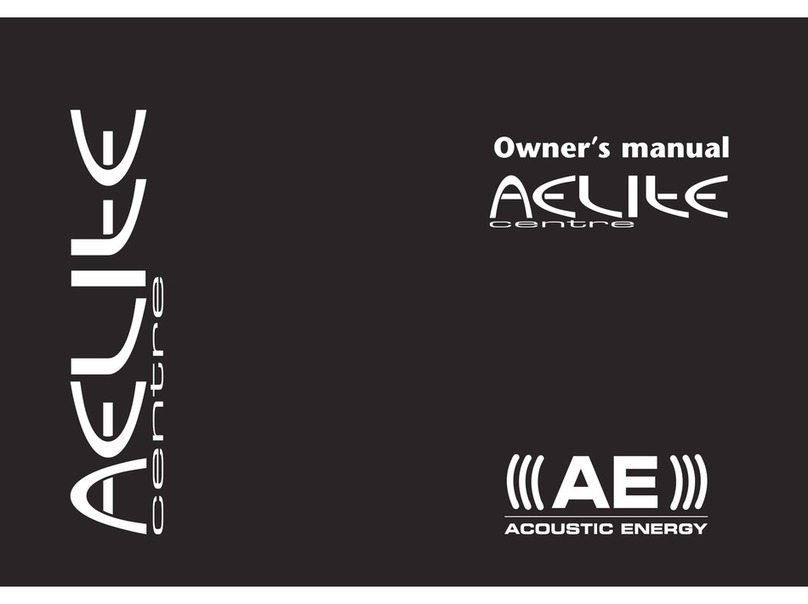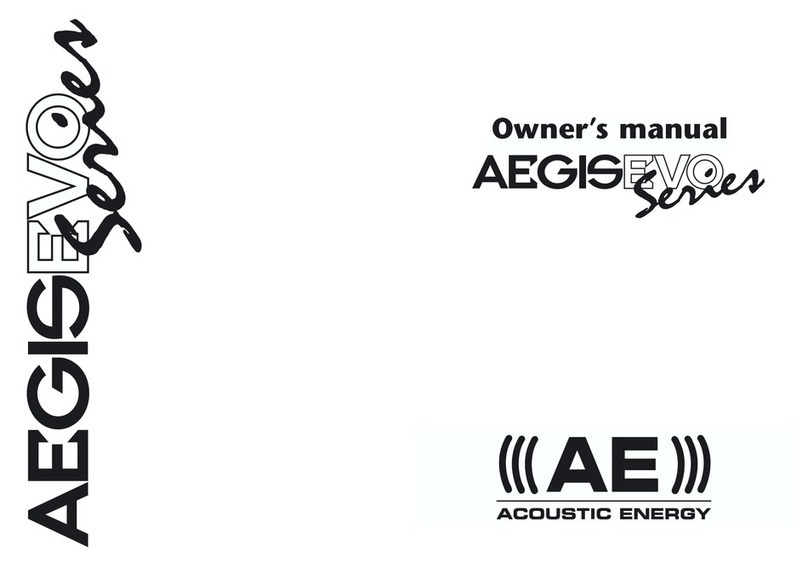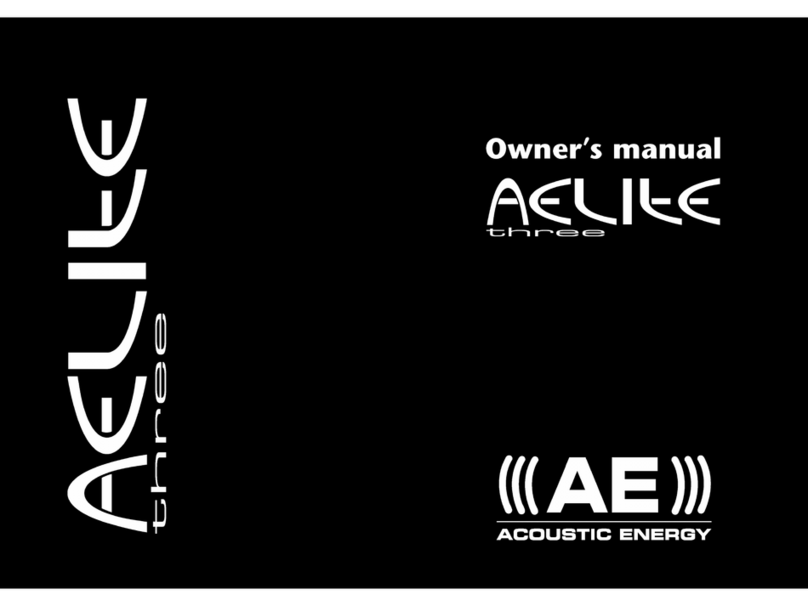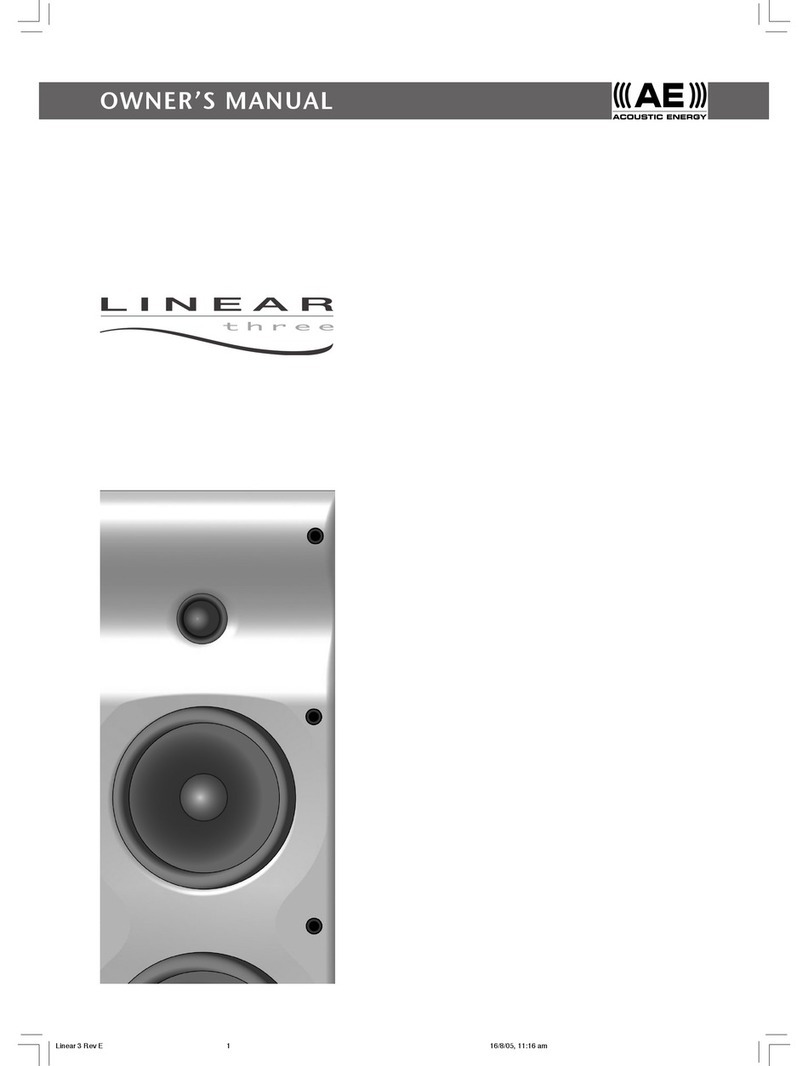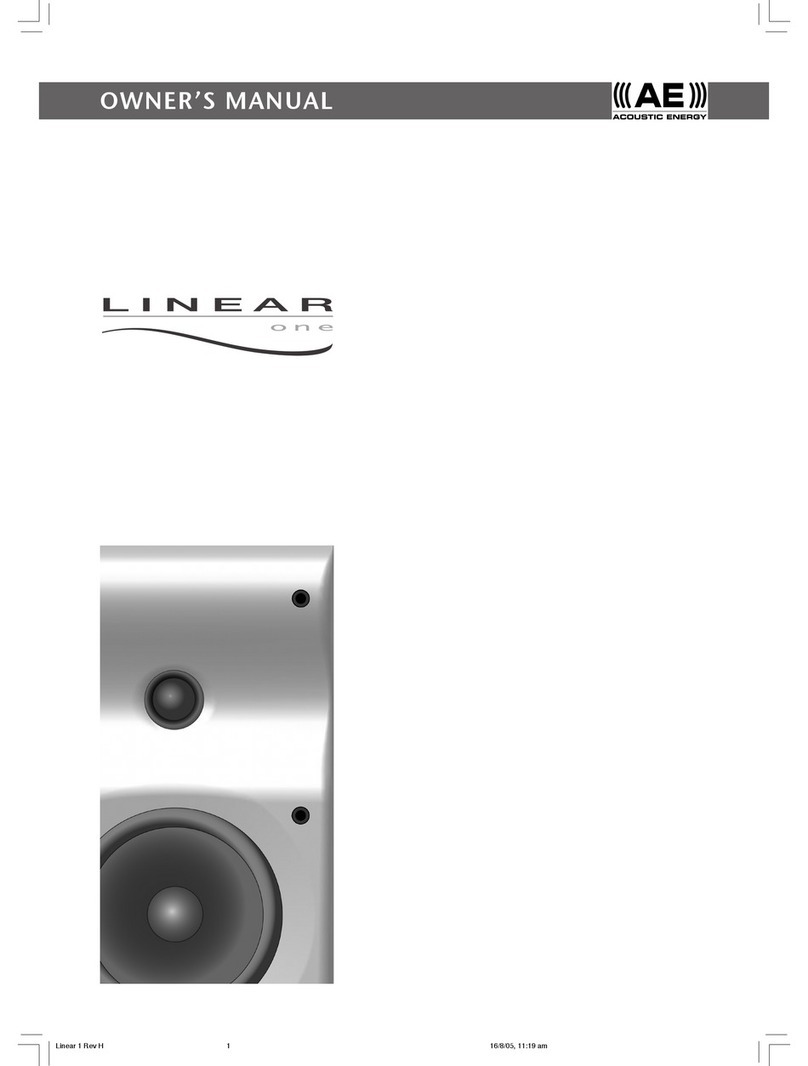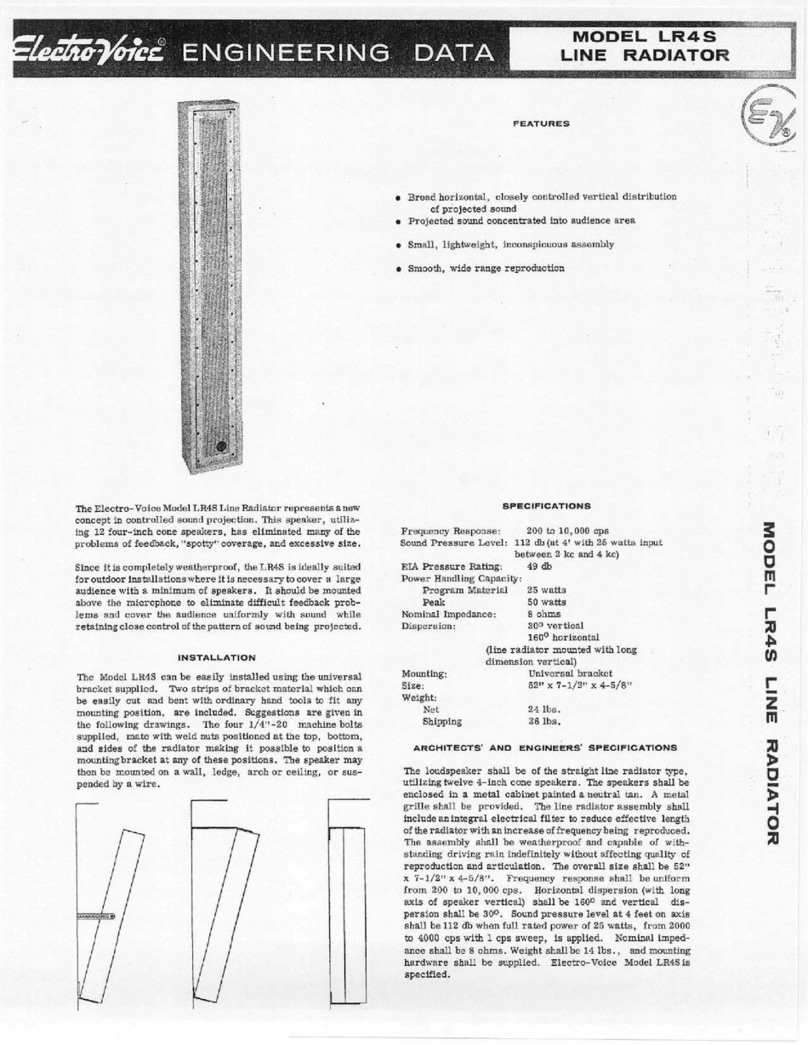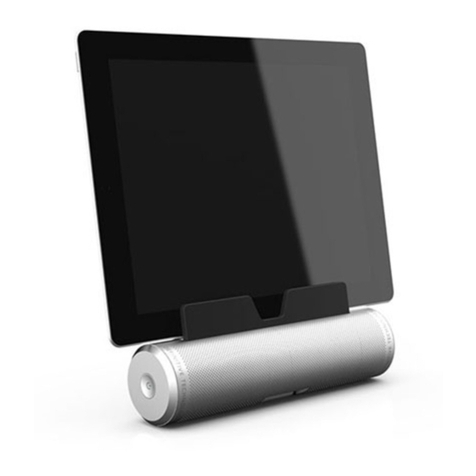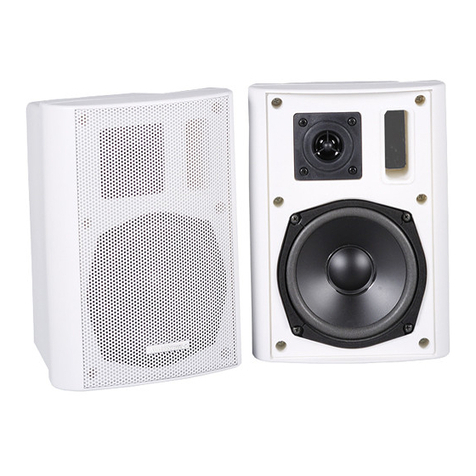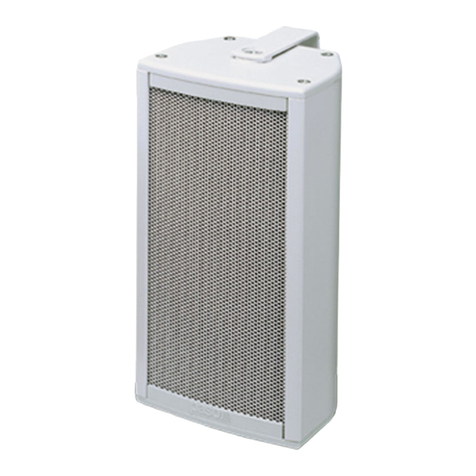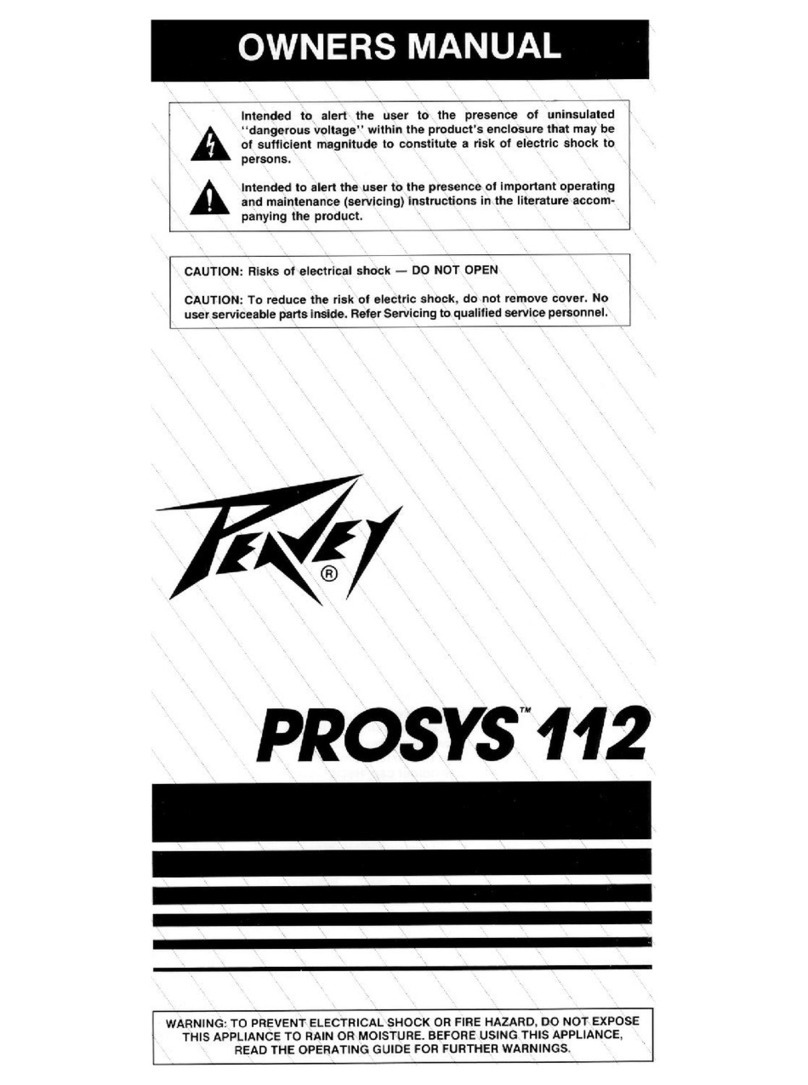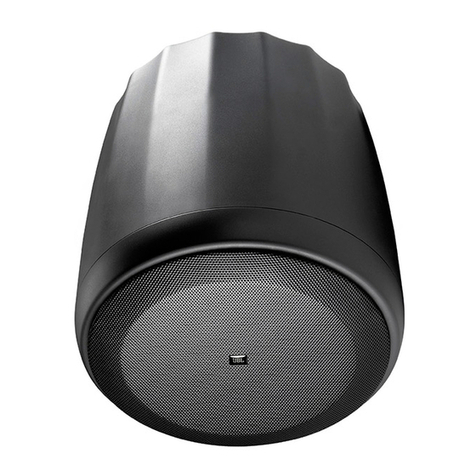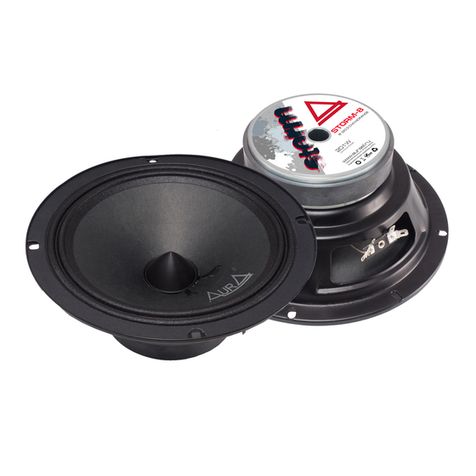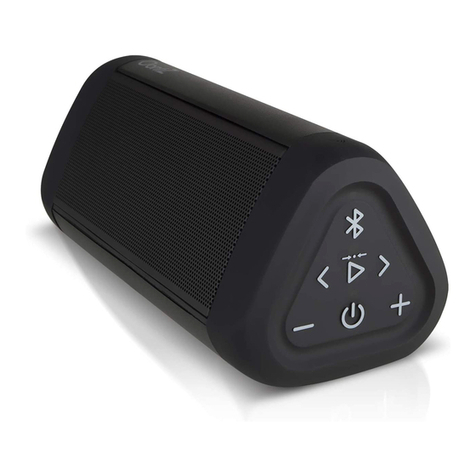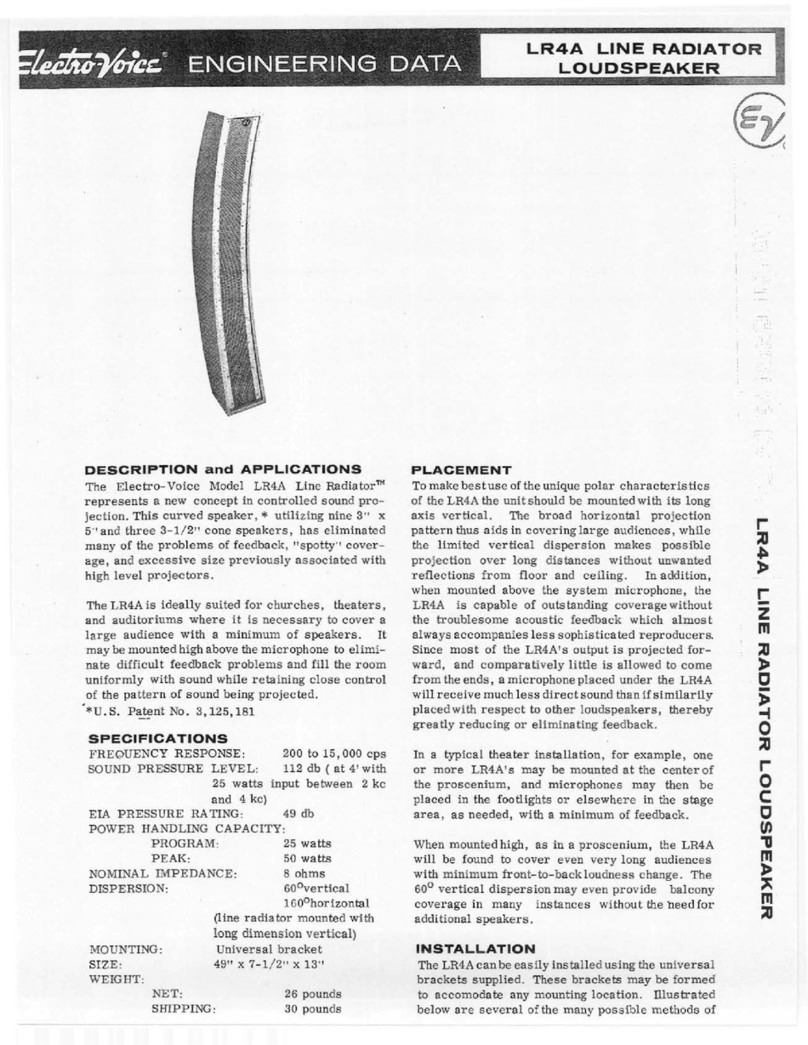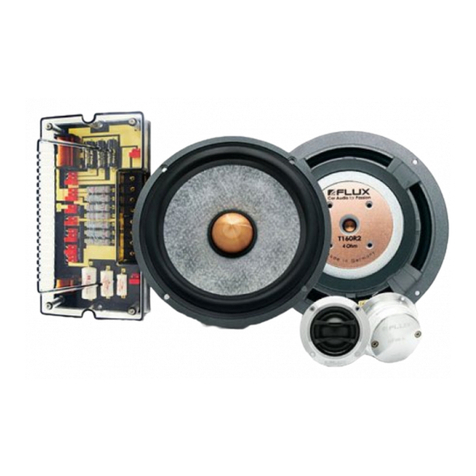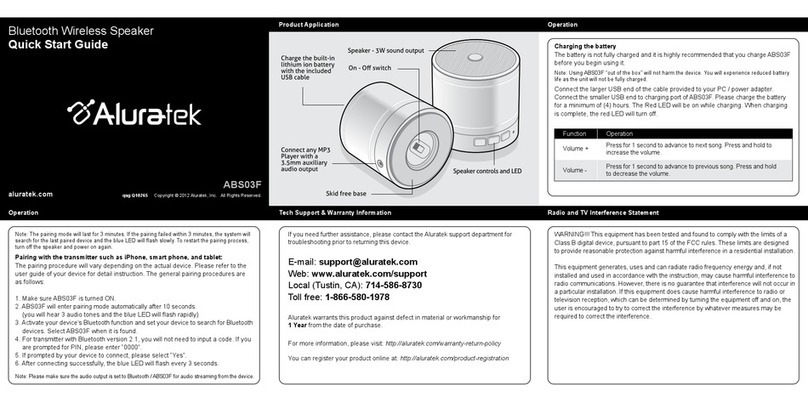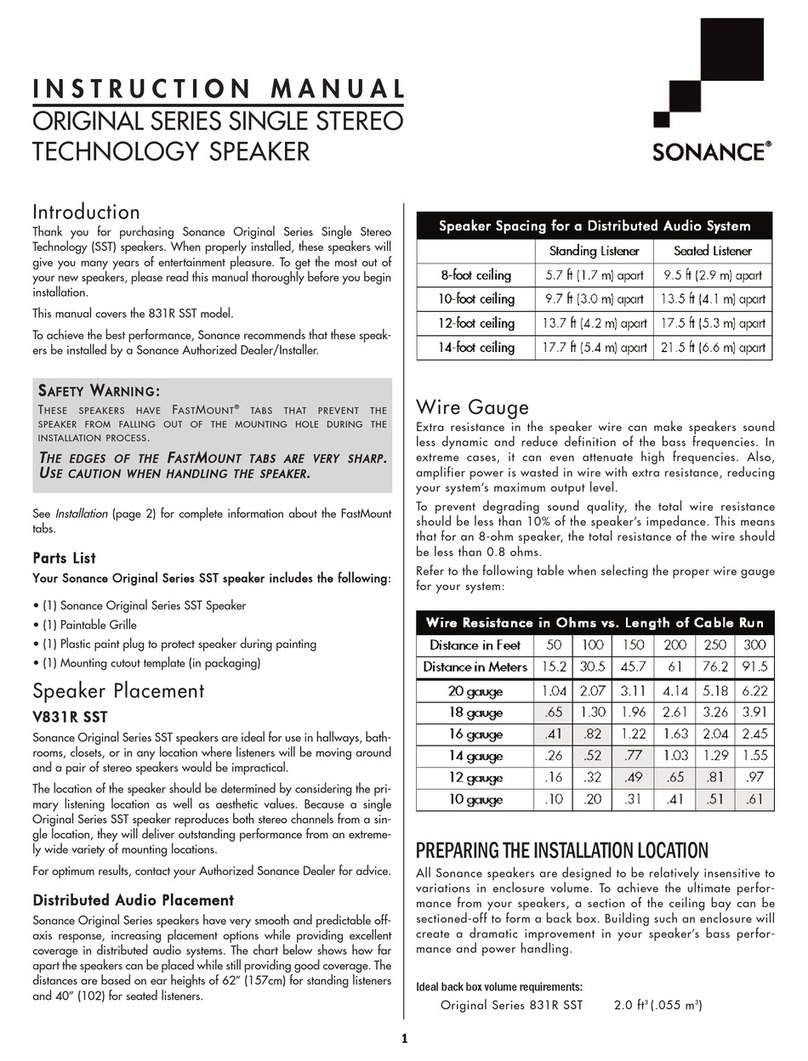Page 4
6. CONNECTING
Connecting your AE1s to an amplifier is a fundamentally simple process,
however there are some issue to bear in mind concerning connectors
and connection, cable type and amplifier compatibility. The connection
panel is illustrated in Diagram 2.
Each pair of AE1s is fitted with one pair of WBT binding-post terminals.
Thanks to the AE1’s meticulous filter circuit layout there is no need, or
advantage to be gained, from “bi-wiring”. The terminals can accept
either stripped wires, spade connectors, or 4mm terminals. Each
termination method is potentially equally effective and the choice of
termination is likely to be influenced by type of loudspeaker cable used.
Your dealer, distributor or cable manufacturer will be able to offer advice.
It is important when connecting AE1s to ensure that each speaker is
connected with the same polarity. The positive (left hand) terminal
should be connected back to the positive terminal of the amplifier and
the negative (right hand) connected back to the amplifier’s negative. No
damage will occur if AE1s are connected with incorrect polarity however
their performance will be seriously degraded. Take care when connecting
the AE1s not to touch the negative and positive terminals together and
“short-circuit” the amplifier. Connections are best made with the
amplifier switched off.
Choice of cable type will be influenced by the characteristics of other
components in your hi-fi system and again your dealer or distributor will
be able to advise. Even so, there are some simple guidelines to consider:
• Cable runs to each speaker should be kept as short as possible
consistent with each being of equal length.
• Short cable runs are especially important if the cable is of relatively
small cross-sectional-area.
• If the cable type is advertised as “directional” care should be taken to
ensure that the orientation of the cable is as recommended.
It is wise before listening to your AE1s to make one final check of the
cables and connections. If all appears well begin listening at a relatively
low level to confirm that the system is operating as expected. Only
increase the volume if you are happy that the sound at low levels is
fundamentally as expected. If you are unhappy, turn the system off and
recheck all the cables and connections.
AE1s will take a little time to “run-in”, and similarly the system will also
perhaps take some time to reach normal operating temperatures. It is
unwise therefore to make rapid judgements about the performance of
the speakers. Your ears too will take some to to adjust to the new sound,
so revisiting the system set-up, loudspeaker positioning especially, is best
for a few days.
7. LISTENING
DIAGRAM 2
8. AE1 HISTORY
The original AE1 was first introduced to the
audio industry with spectacular success early in
1988. It is best remembered for introducing an
innovative metal-cone driver technology that
subsequently influenced loudspeaker designers
and manufacturers the World over.
The AE1 was primarily designed to satisfy the
needs of the professional audio sector and
quickly acquired a global reputation with
musicians, recording artists and studio
engineers. However, audiophiles were also quick
to discover its dynamic accuracy and
transparency, precise stereo imaging, high
power handling and linearity. The hi-fi market
rapidly became an integral part of Acoustic
Energy's growth.
While the Series II AE1 of the mid 1990s
introduced relatively small scale enhancements
and revisions, the Series III product marks a
complete reappraisal of design and technology.
Remaining true to the philosophy and qualities
of the original it brings significant performance
gains across every parameter.


